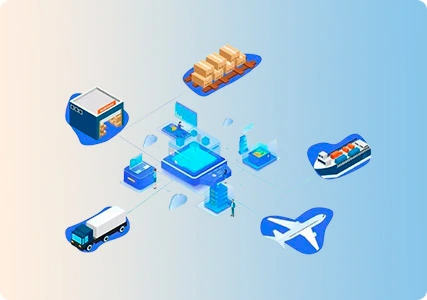
To guarantee seamless cross-border shipping, it is imperative for businesses to effectively manage all essential shipping and delivery documents. These documents serve a critical role in facilitating customs clearance, streamlining the overall delivery and payment processes. Therefore, it is crucial for businesses to arrange the necessary key documents for cross-border shipping.
These are some of the main documents for international delivery and clearing customs. Other documents include country-specific certificates, dangerous goods forms, a shipper’s letter of instruction (SLI), a pro forma invoice, and so on. Whether you need any of these will depend on your particular case.
Bill of Lading
The bill of lading (BOL) is one of the most important cross-border shipping documents, whether the shipment is by land, sea, or air. It verifies that the carrier successfully picked up the shipment and will transport it to the agreed destination.
The BOL specifies the ownership of different parties of the transportation deal at each stage and acts as a contract between them. Thus, the document protects all three parties and can be used in case of a dispute. It also mentions the nature, weight, and number or volume of each of the goods loaded. This information is the backbone of keeping track of any freight you choose to ship or haul. Recently, the electronic Bill of Lading has become popular.
Packing List
The packing list is an essential document for cross-border shipping, providing detailed information about the contents of the shipment. It lists all the items included in the package, along with their respective details such as weight, dimensions, and quantity.
Moreover, the packing list serves as a reference for creating the bills of lading for the shipment. The information on the packing list helps carriers accurately track the shipment and ensure its proper handling during transit.
Transport Insurance Certificate
Cross-border shipments face many risks. Thus, it makes sense to have insurance against unwanted situations, such as damage, missing shipments, deterioration, and so on. The transport insurance certificate is an important part of cross-border shipping documentation. It clearly mentions the goods covered, defines the scope of the risks covered, and specifies the terms and conditions of the business deal.
Proof of Delivery
You need a POD whether the shipment is cross-border or not. The POD acts as a legal receipt that the consignee has received the shipment. A signed POD confirms that the delivery was correct and that the shipment was in the right quantity and damage-free. There are two primary methods of proof of delivery: paper and electronic. However, the paper method is slow and error-prone. Thus, more shippers are now switching to electronic proof of delivery.
Certificates of Origin
When shipping goods internationally, some customs regulations may require a certificate of origin. This document confirms that the items in the shipment were entirely obtained, made, or processed in a particular country. It helps customs officials determine where the goods came from and ensures that the shipment meets the necessary requirements for international trade. Almost every country requires a certificate of origin for customs clearance.
To make things quicker, businesses can consider using an electronic certificate of origin (eCO) instead of a paper certificate. ECOs are faster to process and can speed up the customs clearance process.
Commercial Invoice for Shipping
When trading internationally, the commercial invoice is crucial to clear customs. It enables customs officials to determine the appropriate duties and taxes to be charged on the shipment. The invoice includes important information about the goods and all the parties involved. Filling out the commercial invoice accurately is essential to avoid lengthy holdups and delays at customs.
Digitize Documents for an Easier Cross-Border Shipping Experience
In the past, shipping companies used paper-based documents for all the necessary shipping forms. These documents were manually handled by multiple parties throughout the delivery chain, resulting in slow and inefficient processes. The billing process could take weeks after delivery, and paper documents were prone to misplacement. Missing documents could cause significant delays, increase operational costs, and disrupt the entire delivery process. Furthermore, paper documents made collaboration and sharing of shipping information difficult for all parties involved.
Therefore, switching from paper-based documents to digital forms using tools like eTower can significantly improve the cross-border shipping experience. Digitizing the documents and the collection and management process enables all parties involved to know the shipment's status in real-time, and back offices can quickly send correct documents if there are problems. Missing documents are less likely, and shippers can receive payment faster. By going digital, businesses can save on operational costs, improve customer satisfaction, increase efficiency, and reduce delays at customs.










